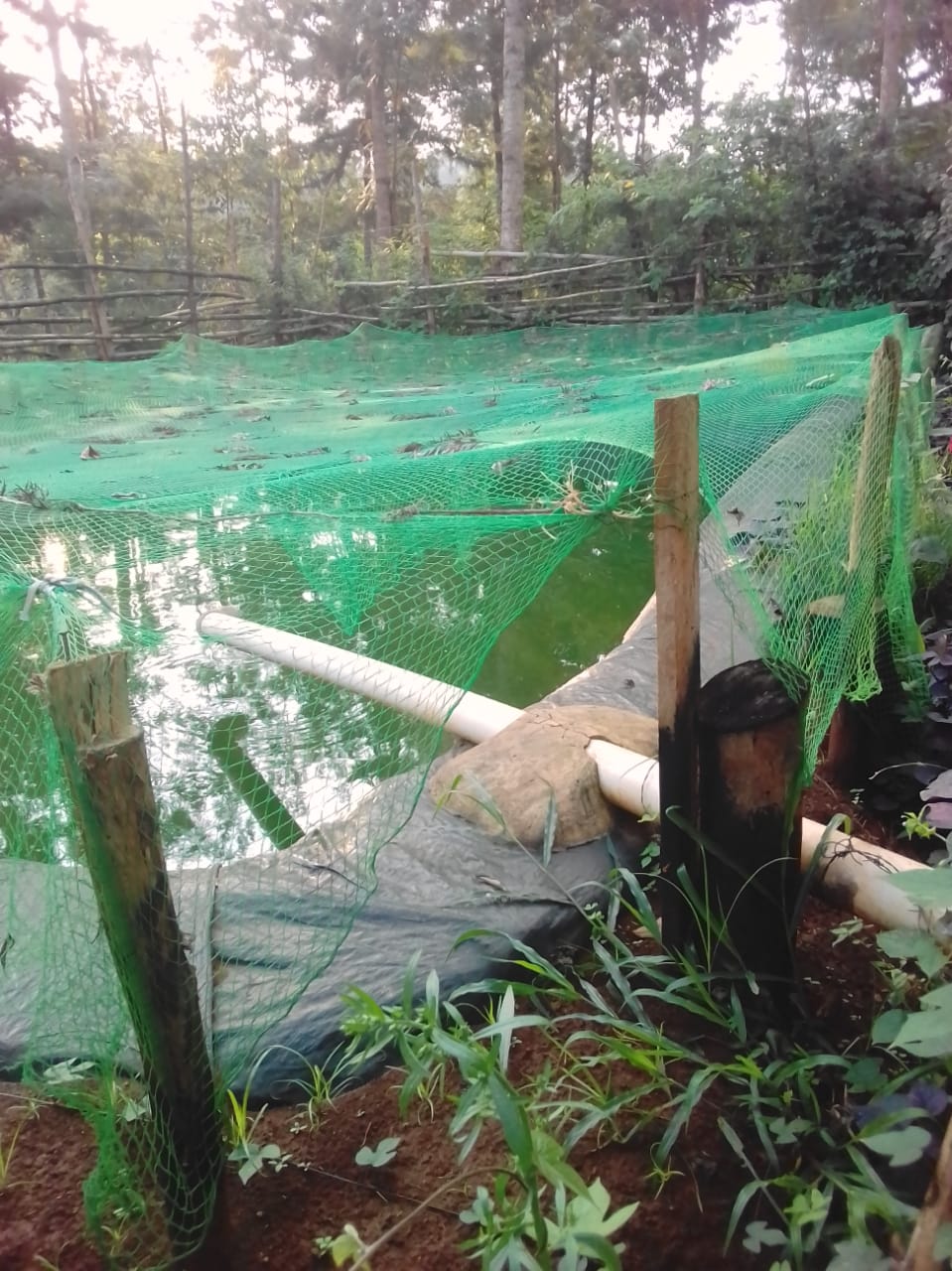One Nyeri farmer has started fish rearing after using water collected from surface run-off in the rainy season in a bid to diversify and earn more income.
In May 2018, James Kamotho, 55, realized that a lot of water was going to waste in every time it rains and since he wanted to fully use his farm besides growing traditional vegetables, he started collecting the commodity by constructing a dam and two underground tanks.
“My farm in Mukurweni is on a sloppy ground and as such it was a good place to harvest rain water easily from the nearby tarmac,” said Kamotho.
Water harvesting at Kamotho’s farm in Mukurweini, Nyeri County
“The dam has a capacity of 200,000 liters while the two underground tanks have a capacity of 100,000 liters each, furthermore run-off surface water collected totals 200,000 liters,”
Kamotho began fish farming by constructing two fish ponds in his farm. He then bought 1,000 catfishes from Kirinyaga at Sh20 each and stocked them in the ponds with the help of a technical expert.
Each fish pond measured five meters by 10m and has a depth of 1.5m and was stocked with 500 fingerlings.
“To reduce predator attacks such as birds, I bought bird nets worth Sh40,000 to fence off the ponds all round, the nets have so far been effective 100 per cent,” said Kamotho.
“The nets work like mosquito nets; they thus completely prevent predators from entering the fish pond,”
“I am a nutritionist officer working in Marsabit County. I was the county nutrition officer from 2013 to last year 2018. So I have a passion of food security in my heart, having worked as a nutrition officer in charge in Kajiado County and lately at Marsabit County,” he said.
Related content
Kenyan fish pond farmers poised for good market opportunities as wild catch dwindles
Kenya\’s fish production increases by 10 per cent improving farmers’ income

A fish pond at James Kamotho’s farm in Mukurweini, Nyeri County.
He feeds the fish on 150kg fish supplements monthly. In this, one 50kg bag which costs Sh3,000 lasts for 10 days.
“The high cost of feeds is one the biggest challenge in fish farming, currently, we are forming farmer groups in our region to help us bargain better. We are now talking to the County Government of Nyeri to help us subsidize the costs,” said Kamotho.
In December 2018, the father of four harvested 100 fishes for subsistence consumption. He sold 30 of them to neighbors at Sh300 each.
Since the fish had not fully matured he was advised by extension officers to wait till July 2019 when he expects to harvest all the fish.
“I expect to harvest at least 600 fully matured fish weighing an average of 1.5kg each as cat fishes are carnivorous and feed on each other and hence I do not really know their exact population at the moment,” he said.
After harvesting he plans to stock new fish to his increase production capacity.
“I expect to sell this fish at between Sh400 to Sh600 per kilo with the help of my deep freezer that will help me store the produce,”
The total fish output in Kenya increased by 10 per cent from 135,100 tonnes in 2017 to 148,300 tonnes in 2018 according to the 2019 Economic Survey report by the Kenya National Bureau of Statistics.
The survey reveals that fish from fresh water sources increased from111, 800 tonnes in 2017 to 124,100 tonnes in 2018.
Kamotho can be reached on 0721 308 329
The total fish output in Kenya increased by 10 per cent from 135,100 tonnes in 2017 to 148,300 tonnes in 2018 according to the 2019 Economic Survey report by the Kenya National Bureau of Statistics.
The survey reveals that fish from fresh water sources increased from111, 800 tonnes in 2017 to 124,100 tonnes in 2018.